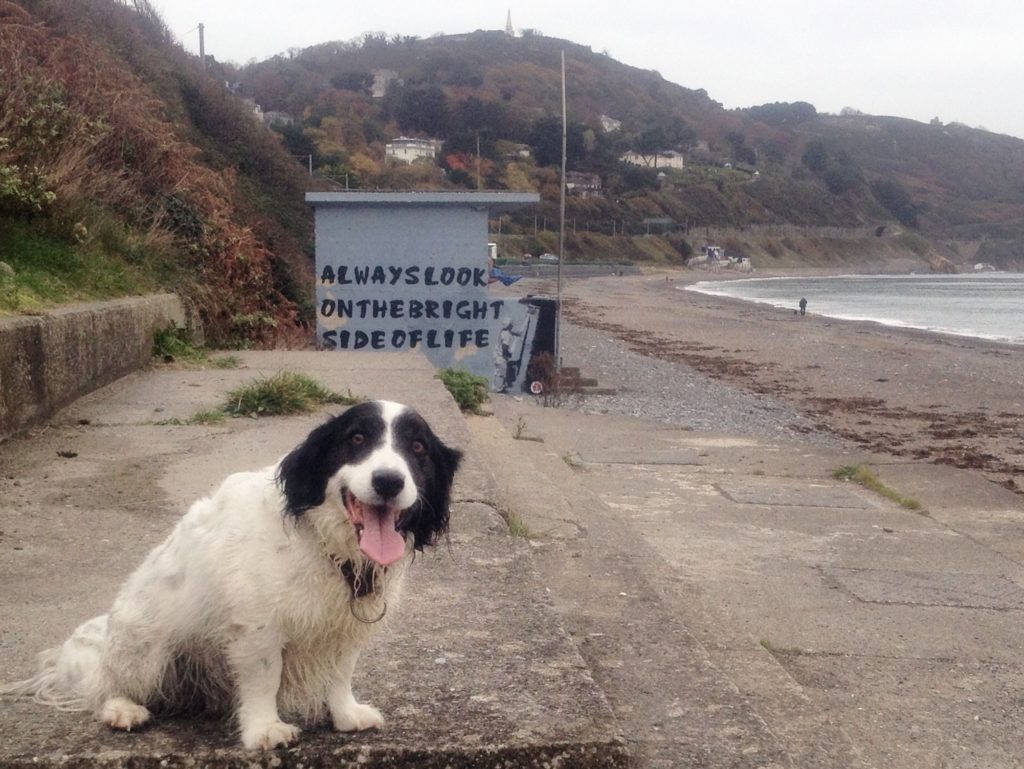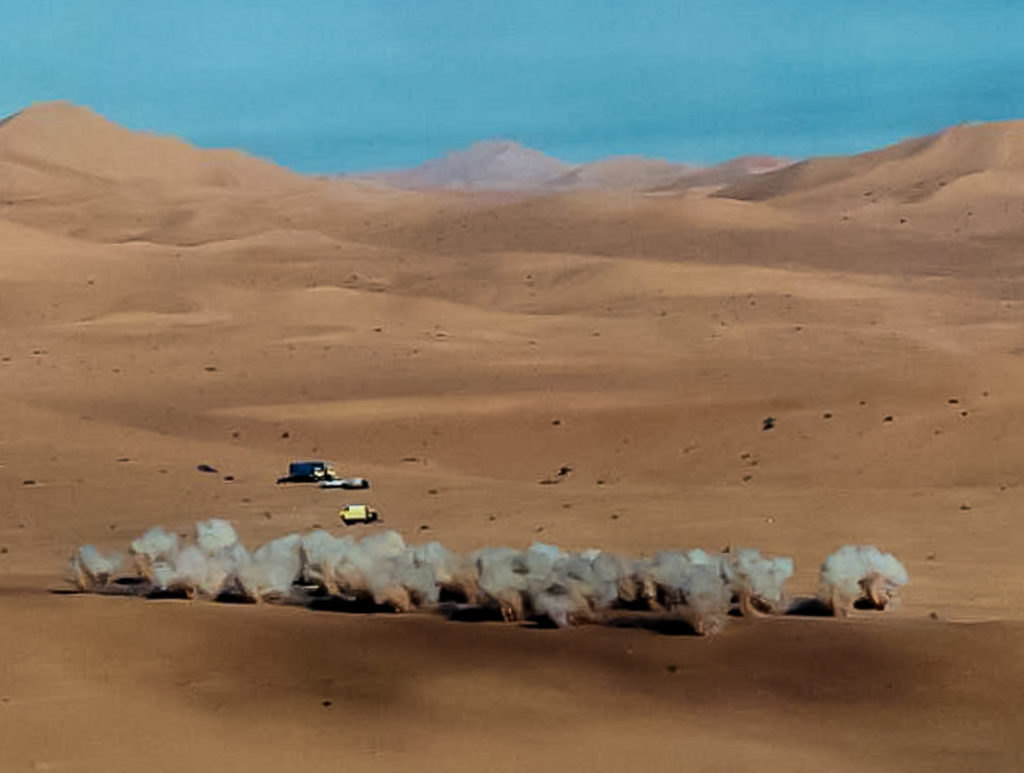I had a couple of vivid dreams last night. Both of the dreams involved impossible workplace situations that sent me back in time to places that never existed. Some weird connections came to me as I awoke, those dream sequences having been extraordinarily real. I’d had enough of swimming in darkened crypts. Say no more.

On waking, thinking ‘3-Sigma’, I remembered being asked several years ago to give a talk on analytics and machine learning for geoscience applications. I borrowed a phrase from Toy Story and called the talk ‘To 3-Sigma and beyond’. I look back on that opportunity with a degree of wistfulness. I had flown across the Atlantic to return home unsure the executives really heard me. I hoped they didn’t blame the couple of collaborators that assisted me.
I think of 3-Sigma as a statistical space inhabited by outliers in hiding, some three standard deviations from a mean. It’s a place where science fictions can inform science facts. Or where the outliers can mug you. Would you bet the farm on a something that has 3 chances in 1000? I thought I had misjudged my audience but it soon turned out that I was the sinister one. The right hand was most secretly conducting an entirely new orchestra of players for engineering-type ML based on data from gauges and meters. They had no reason to reveal their dexterity let alone need for a left hand. My arguments for considering another approach, also unheard, was in an aphorism promulgated before my birth:
‘…knowing begins and ends in experience, but it does not end in the experience in which it begins.’ from American philosopher C. I. Lewis.
At the start of this post there’s a picture I used in my presentation. I like it so much that I used it in an earlier journal Look On The Bright Side and for obvious reasons. Sometimes, graffiti aside, things can be less than obvious. Sometimes we fail to imagine a future, other times we don’t see the past.
This photo was taken roughly where Robert Mallet conducted an experiment that was non-obvious to anyone in 1849. His design was clever enough that the global geophysical industry has mimicked it unknowingly for 160 years. Of course, some tens of people know but hundreds of thousands of geoscientists have no clue of this original bit of thinking. Nor did I until I attended a further-education class in 2011. I’ve been a member of the Society of Exploration Geophysicists for going on forty years and I’ve regularly attended short courses given by distinguished instructors such as Julien Meunier.
Meunier used the experience of his life’s work to tell us all about ‘Seismic Acquisition from Yesterday to Tomorrow’. His introduction took me by surprise. From the classroom in San Antonio, Texas we jumped to where we walk our dog on the other side of the Atlantic. There, on that same beach in 1849, Mallet was interested in understanding earthquakes in order to protect against them.
Mallet brought his son John to assist. As Meunier puts it, he also brought ‘a few pounds of gunpowder, a shovel, a half mile of electric wire, a battery, clock, pen, paper, and … a bowl of mercury.’ Mallet used a small telescope hoping to see some agitation start on the surface of the mercury after he detonated the gunpowder. He fired the explosive using the battery, sending an electric impulse down the wire to the hole he’d dug half a mile away. His clock measured the time of the delay between detonation and agitation. He already knew sound travels in rock faster than in air.
The mercury rippled before he heard the explosion. Even with his explosives on the surface, he had proved that the energy moved through the sub-surface rock. Furthermore the ripples were waves radiating away from the source. Moreover, he had an idea of the wavefront’s propagation velocity. Not an accurate idea but that’s hardly the point. He had vision. He was resourceful. I read yesterday that he came from the Mallet family that ran the Victoria Foundry, just off Capel Street – you know the company that provided the ironwork for Kingsbridge Station in 1845 and others. No, of course you don’t know unless like me you picked up a swap book before Covid from the Pavillion Cinema The Liffey in Dublin by JW de Courcy (the last movie we attended was Sorry We Missed You).
A couple of years after my class in San Antonio, I was arrival-jet-lagged in a hotel in Wellington and guess what? I watched an episode of the BBC Coast program in which ‘Hermione Cockburn creates an earthquake on Killiney beach to discover how 160 years ago a local man, Robert Mallet, invented seismology, the study of earth tremors that has helped to save countless lives.’ And here’s the insane bit: later that day, I had to evacuate when an earthquake shook the hotel room. I knew it was earthquake because it felt much like the one Lia and I woke to in Corfu in the late 70s. Thump, shake, rattle.
Being on the fifth floor in Wellington, I must have decided that I didn’t want to die compressed to a pancake under the collapsing weight of the many floors above. Believe me, I was awoken, startled by a weird sensation like the firm bed was momentarily turning to a waterbed. I saw the lamp standard had become an upright pendulum. The silence of my room had been replaced by a creaking of doors and a short rattling of windows. I didn’t hesitate until I was outside the room. The Kiwis are ‘well used to these tremors’ was how the receptionist politely explained why I had been the only one at the emergency muster point. This was when I asked for a spare key standing barefoot in the lobby in shorts and T-shirt unable to remember how I panicked and forgot my passport and credit cards.
Explosives were commonly used as an impulsive energy source in the geophysical industry for a century. Be impulsive, thump your desk or table and you’ll feel why. An expanding industrial demand was met with evolving safety, security, logistics and environmental practices and sensibilities dictated change. On land, vibratory technologies came of age, while at sea, compressed air was a more efficient energy source. Nonetheless, in deserts especially, explosives continued to have application.
I was involved in a project that used a lot of explosives in the Algerian Sahara. Colleagues had found a crude but clever way to operate in very difficult terrain. Like Mallett, we needed to radiate energy that could be echoed back from the subsurface. The scale had changed in the intervening 150 years. Instead of one hole of gunpowder and a bowl of mercury, we drilled 100,000 holes and deployed sensors in a million locations, give or take, the modern sensors being the equivalent of the bowl of mercury. Think of a very coarse fishing net draped across a terrain of rolling 300 m hills. The coarse net was made up of perhaps 50 m squares, a sensor at each intersection. In its day, it was considered huge, five times the area of Manhattan. Many said it couldn’t be done. That’s in part because the net is made up of lines of wires that carry the electrical signals. Hundreds of kilometres of wires. A net made from a network of fibre cables and copper wire needed the daily labours of hundreds of local people working to deploy and pick-up it all up again. I’m sure you get the picture knowing that it’s simplified for this journal.
I told you this because I heard a colleague disparage an idea discussed among a peer group of geoscience advisors. I’ve never forgotten how a single snide comment can destroy a proposal that the denigrator fails to comprehend. The room hears such mocking as jocular, presumes it’s an informed opinion beyond their expertise and stop caring. This story involved news that the Dyno-Nobel company, Peace Prizes and all that, had come up with a better way to add metal to add to their explosives. The addition of metal promotes faster oxidation and reduces cavitation gases. Putting it in industrial products could yield a sharper initial signal, something we geophysicists desire, and call a spike.
Geophysicists love these kinds of spikes because a spike in time transforms to a box of all frequencies which offers potential for improved resolution. A useful analogy might be the expensive low dispersion glass in professional camera lenses (an analogy is not a scientific equivalent). So while among our peers, saying that the explosives normally burn at 6,500 metres per second but enthusing about new technology that increases the burn velocity by 10%, well, I guess eyes glazed over just like yours did now. And that was it. No one cared any more. Though the snide remark was considered funny by some, ‘He dreams of dynamite’ did a lot of damage.
I should mention that this was at the end of a decade of contrarian management experiments instigated by some powerful contrarians who thought that creating technical tension wouldn’t create a bullying culture. There are stories I could tell to show they were wrong, very wrong.
So here’s a quote that was offered when I went looking for clowns recently. I must presume a machine somewhere on the planet has learned that Trump and paranoia were among my terms of recent interest. While one day searches may be mediated, or better yet, contextualised with terms of endearment, for now this is what I was linked to read at Goodreads:
‘My paranoia wasn’t always right, but just to be on the safe side, I never went to sleep with a clown in the room.’ Mark Henwick (novel Hidden Trump)


Love this article. Thank you so much!
Thank you. It’s nice to get out from the darkened crypts from time to time.